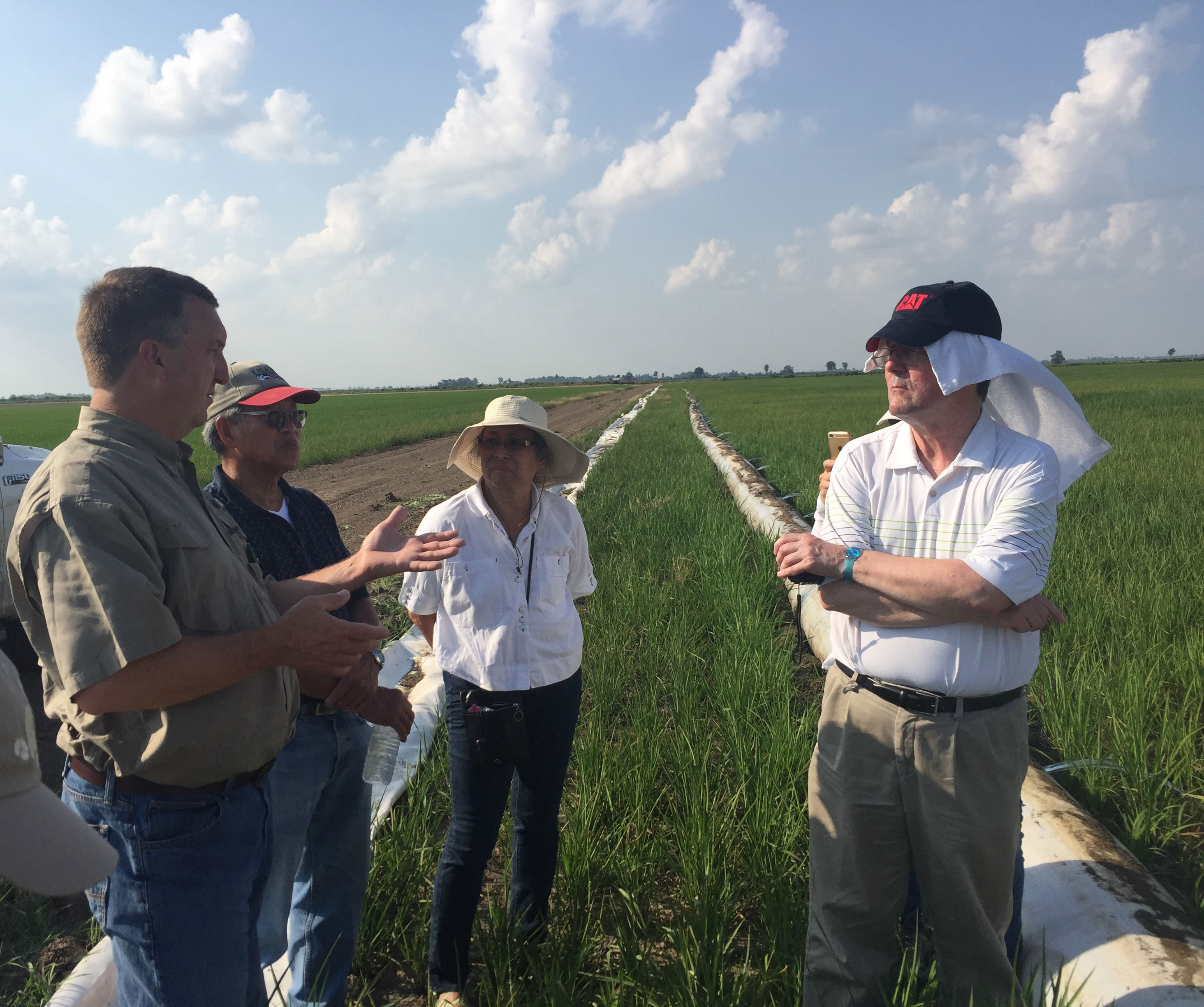 Mike Sullivan (left) explains the irrigation system on his AR rice farm to a team from Kellogg's
Mike Sullivan (left) explains the irrigation system on his AR rice farm to a team from Kellogg's
Feb 07, 2017
BATON ROUGE, LA – The current drumbeat for rice irrigation is: “take time to measure and evaluate inputs, including water, because the money spent to hold and move that water can decrease significantly with management upgrades.” Irrigation strategy can be measured in droplets and dollars, and because producers have more options than ever before, determining how to water rice is more complicated today than it’s ever been. Fortunately, a lot of information is available to help farmers make that decision.
Just last week, at the Conservation Systems Cotton and Rice Conference here, irrigation was the most talked about topic in breakout sessions. Growers, research institutions, and allied businesses discussed irrigation techniques and shared success stories from the research, technical, and practical side.
Father and son farming team, Mike and Ryan Sullivan, from Burdette, Arkansas, shared their experience with rowed rice production. Their family operation has had good results with furrow irrigated rice, with a great data set that facilitated their decision to significantly increase their row rice acreage for this irrigation season. Row rice production is not a new concept, but as seen throughout the conference, has new-found interest in the mid-south.
The greatest water saving technique in mid-south rice production still goes to Alternate Wetting and Drying (AWD) on zero grade fields. AWD allows irrigation water to subside down to a level of mud, then is reflooded during the growing season. This technique not only significantly decreases water usage, it also decreases the greenhouse gasses emitted, and can allow access into the carbon market, which could eventually bring additional income to a rice farming entity.
Another popular topic of discussion throughout the rice sessions was the USA Rice and Ducks Unlimited partnership’s successful acquisition of and implementation of mid-south Regional Conservation Partnership Program (RCPP) funding. The USA Rice and Ducks Unlimited partnership challenges producers to improve their irrigation efficiency, while mitigating some of the risk from deploying change by offering financial assistance for new, continually improving irrigation procedures that will lead to more sustainable rice production.
“Although we are fortunate in our county, being right beside the Mississippi River, to not have a water shortage like others do, we still want to be proactive and use the least amount of water we can to grow our rice,” says Ryan Sullivan. “Ducks Unlimited and USA Rice have been terrific in partnering with all of these new irrigation methods to reduce water usage and greenhouse gases. The other huge part of this program is holding the rain water for the ducks all winter. There have been ducks in fields around here that I have never seen them in before, and it’s all because of RCCP.”